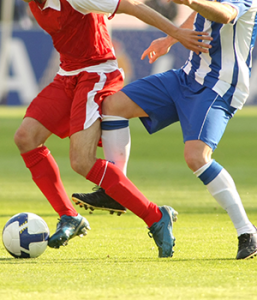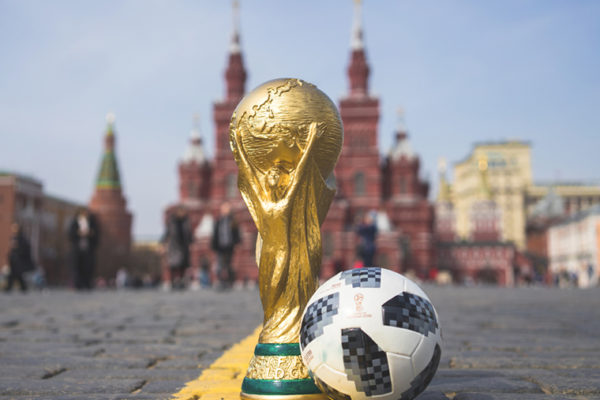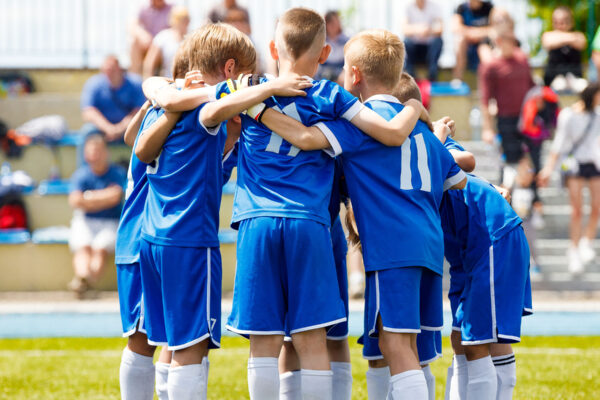
When the World Cup soccer tournament began, 736 players from 32 countries were ready to participate. But since play opened with Brazil defeating Croatia, injuries have affected a number of players.
American striker Jozy Altidore pulled a hamstring, Cameroon’s Samuel Eto’o was knocked out with an injured knee, and Dutch defender Bruno Martins Indi left his country’s game against Australia on a stretcher after suffering a concussion. Other players are “gutting it out” and remaining on the pitch in spite of bumps and bruises, or, in U.S. forward Clint Dempsey’s case, a broken nose.
Those same injuries also plague soccer players at all skill levels. Orthopedists and physical therapists at Washington University School of Medicine in St. Louis diagnose and treat numerous soccer injuries year round. Their goal is to get players back on the pitch and prevent new injuries.
Robert H. Brophy, MD, associate professor of orthopaedic surgery, served as team physician for the St. Louis Athletica women’s professional soccer team. He also played soccer while an undergraduate at Stanford and later played for the California Jaguars professional team in 1995 and 1996, when they won the United States Inter-Regional Soccer League (USISL) title. He also was a member of the Palo Alto Firebirds, the USISL national champions in 1992.
“If fear of injury makes you tentative, you may be more likely to get hurt,” said Brophy, a sports medicine specialist. “Due to the limited number of substitutions that can be made during a World Cup game, a lot of athletes will try to play through relatively minor injuries like ankle sprains or muscle strains. More significant injuries, such as fractures or ACL tears in the knee, make it unlikely that a player will return to play during the World Cup. And those with concussions may miss a game or two, but some will be able to return to play if their symptoms clear after appropriate rest and recovery.”
Brophy explained that the biggest risks for soccer players involve ankle injuries, hamstring strains and various soft-tissue injuries that come from collisions, getting kicked or tripped by another player or hit by the ball after it’s kicked.
“In the clinic, we use several ACL-prevention plyometric programs that focus on specific techniques during jumps and landings so that we can help soccer players improve their coordination and mechanics,” said Judy Gelber, DPT, assistant professor of physical therapy and of neurology. “There’s even a new smartphone app we use called ‘Ankle’ from a group in the Netherlands. It’s an eight-week program designed to prevent ankle sprains.”
The idea of the app, Gelber said, is to let athletes begin with physical therapy rehabilitation and work up to the point where they can manage their own ankle injury-prevention program.
Like Brophy, Gelber played soccer in college, at Case Western Reserve University. Later, she served as a graduate assistant coach for the women’s soccer team at Washington University. As a physical therapist, she helps athletes through rehab following an injury.
“We create a game-like environment and use tests and measures of high-level function to help make decisions about an athlete’s ability to return to the field,” she explained. “We also analyze posture, strength and mobility that can play a role in screening for future or repeated injury risks. And we educate coaches about injury prevention and teach players and parents about risky movements that might increase the likelihood someone will get hurt.”
Brophy and Gelber said the bumps and bruises players get don’t usually knock them out of action. It’s when ligaments, muscles or tendons get torn or strained that players might be forced to miss a few weeks. And in a World Cup tournament that only lasts about a month, that can mean waiting another four years for the chance to participate in soccer’s biggest event.


